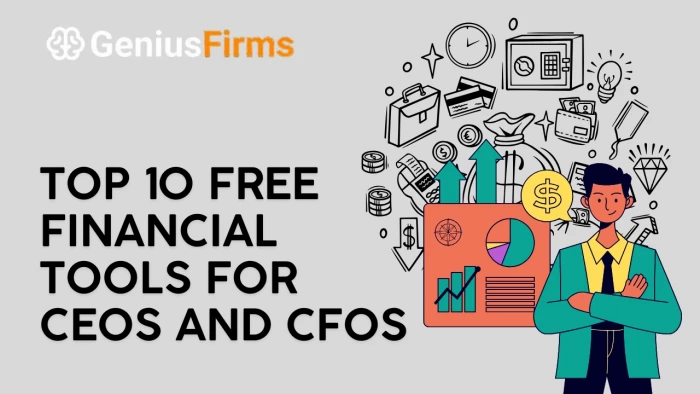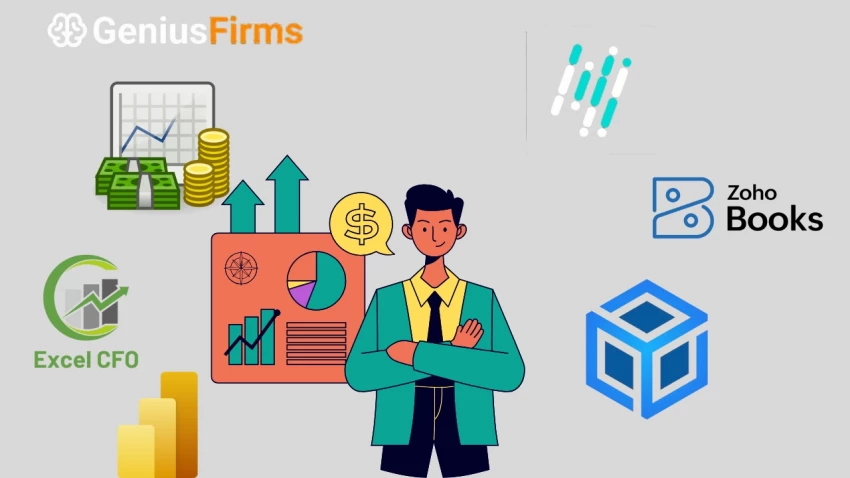

Managing finances at the executive level has never been more complex. CEOs and CFOs face global market volatility, talent costs, supply chain disruptions, and AI-driven innovation all at once. Yet, while challenges rise, budgets don’t always follow. That’s why free financial tools matter more than ever in 2025.
I’ve tested and researched dozens of options. Here are the top 10 free financial tools every CEO and CFO should know about in 2025—covering FP&A, accounting, dashboards, forecasting, and ERP.
When I talk to finance leaders, I hear the same complaint: they spend too much time moving data, not analyzing it. Cube solves that problem.
This tool integrates directly with ERPs, CRMs, and HRIS platforms. You don’t need to leave Excel or Google Sheets to run advanced planning models. I like how Cube automates reporting, enables quick scenario planning, and gives leadership real-time visibility.
For small to medium-sized companies, accounting is often the pain point. Many CEOs and CFOs hesitate to commit to expensive platforms early on. That’s where Zoho Books shines.
The free plan covers invoicing, expense tracking, and bank reconciliation. It also provides automated reminders for clients, simple dashboards, and tax compliance tools.
Forecasting is where many CFOs either thrive or stumble. Traditional models struggle with market shocks. PULSE uses AI to forecast financial outcomes more intelligently.
It brings predictive analytics into budgeting, workforce planning, and revenue modeling. The AI learns from historical company data and external market signals.
Data is useless if leaders can’t scan it. Power BI remains the gold standard for visualization. The free plan still packs a punch.
You can build dynamic dashboards that drill into cash flow, customer profitability, and operational KPIs. It integrates with Excel, SQL, and cloud sources.
Excel may not be trendy, but it’s everywhere. CFO dashboard templates give instant insight into P&L, budgets, and KPIs.
For CEOs who want control without cost, GnuCash is a strong contender. It’s a double-entry accounting system that supports bank accounts, expenses, investments, and even payroll.
Not every CFO needs complex tools. Sometimes clarity beats complexity. HomeBank offers visual charts, trend analysis, and easy imports from CSV/QIF files.
Cledara offers free downloadable templates for Excel and Google Sheets. They cover budgeting, forecasting, and SaaS expense tracking.
For UK-based executives, Money Dashboard aggregates accounts from different banks. It categorizes expenses and highlights trends.
Some companies need scale without cost. Open-source ERP and accounting systems are the answer.
Options include:

When evaluating these tools, I always ask:
| Tool | Best For |
|---|---|
| Cube | FP&A in Excel/Sheets with integrations |
| Zoho Books (Free Plan) | Simple accounting for small businesses |
| PULSE | AI-driven forecasting and budgeting |
| Power BI Free | Visual dashboards and KPI analysis |
| Excel Templates | Fast, lightweight CFO dashboards |
| GnuCash | Robust open-source accounting |
| HomeBank | Simple, visual finance tracking |
| Cledara Templates | Quick forecasts and SaaS metrics |
| Money Dashboard (UK) | UK-based account aggregation |
| Open-Source ERP Tools | Large-scale free ERP and accounting |
For leaders outside the US, regional tools like Money Dashboard fill important gaps. And if you’re tech-savvy with IT support, open-source ERP systems give long-term flexibility.
The future of finance leadership isn’t about choosing between free and premium. It’s about using free tools wisely, saving budget, and then reinvesting in areas that fuel growth.
Be the first to post comment!